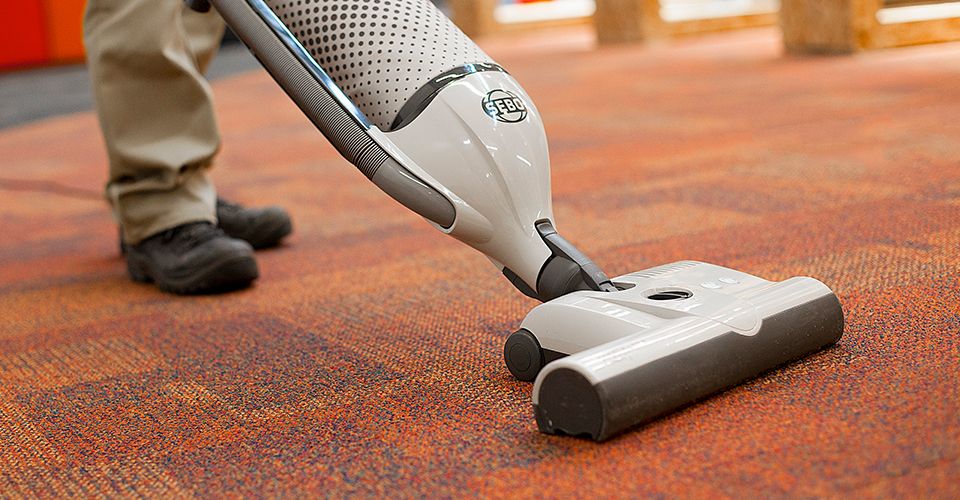Choosing the right school flooring should be an easy choice. And while there’s no one-size-fits-all solution, here are five criteria to help you select flooring that looks good and works hard.
1. Longevity
Ideally, whatever flooring you choose for your school facilities will last a long time, and good flooring will be backed up with a solid warranty. So, the most important questions when making that choice should be: Can it handle wear and tear and still look good years down the road? And what kind of warranty does the manufacturer provide?
Get to know the key performance characteristics that predict durability for each flooring type. The more durable your flooring is, the longer it will last. Couple that with a strong warranty and the ability to individually replace damaged portions of the floor (as with a modular system), and you’ve got a great long-term investment.
2. Installation
You may think there isn’t much to consider outside of your timeline. After all, you’re likely hiring professionals to complete the installation, especially if it’s a large project. But, what you install can also have a significant impact on your overall costs.
Whether soft or hard, any flooring that requires pattern matching or directional installation is going to create more installation waste. That means less of your investment is going on the floor. Modular, and especially non directional, modular products install faster and create much less waste. Interface’s non directional i2® styles, for example, create as little as 1.5% installation waste compared to around 14% with traditional broadloom styles or 3.9% with typical carpet tile.
Likewise, modular flooring systems that require less glue to stay on the floor, like a releasable adhesive or a glue-free installation like Interface’s TacTiles® installation system, also save you time and money in the short and long term. There’s no floor prep needed, no drying time required, no glue smell and far less mess. Plus, selective replacement of damaged tiles can easily be handled by in-house staff. There’s no point in having modular flooring if it can’t be easily replaced.

Durability and ease of maintenance contribute to the longevity of carpet and other types of school flooring.
3. Maintenance
Hard and soft surfaces have different maintenance needs. So, it’s important to consider long-term maintenance costs during the evaluation process. What kind of equipment do you have on hand? How much time can you devote to flooring each day?
Soft flooring like carpet generally needs daily vacuuming and spot cleaning with periodic restorative cleaning. Likewise, LVT and similar flooring can be maintained with sweeping and damp mopping. You shouldn’t add flooring to your list of things to worry about. Avoiding high maintenance flooring (like VCT that requires waxing and buffing) will be better for your budget and for your facilities staff.
4. Acoustics
You already know that noisy distractions in the classroom can affect outcomes for both students and teachers. School flooring with the proper acoustics can help with that. While soft surfaces like carpet are the best at absorbing sound, some resilient options like Interface LVT with Sound Choice™ acoustic backing can keep school buildings relatively quiet.
Ultimately, thinking about how individual spaces are used will determine the acoustic flooring you choose. What you decide to put down in the hallway may not be the same as what you designate for classrooms or administrative offices. But minimizing the amount of noise transmitted throughout the building is a win, regardless of the specific floor you pick.
5. Sustainability
It’s equally important to think about the environmental impact of the flooring you choose. After all, what’s good for the environment is often good for students, teachers and administrators. And if your school has its own sustainability goals, selecting the most environmentally friendly flooring will bring you one step closer to achieving them.
Is the flooring made with renewable materials? Does it contain post-consumer recycled content? Is it recyclable? If so, does the manufacturer offer a way for you to return the carpet after its useful life? Interface’s ReEntry® reclamation and recycling program not only takes back Interface products, but also approved competitor products. What is the product’s overall carbon footprint? If offsetting greenhouse gases, do they include the full lifecycle of the flooring, including the shipping, maintenance and removal of the flooring you buy?
Evaluating the best flooring solution for your school doesn’t have to be hard. Prioritizing durability, sustainability and well-being can help you put your options into perspective and make the right choice for your school and those who use it every day.
One response to “5 Things to Think About When It Comes to School Flooring”
School flooring should also have materials that do not have harsh chemicals that might harm our little ones. It is preferable that you would also have soft material on top of your flooring usually PVC tiles that protect them for accidental falls.